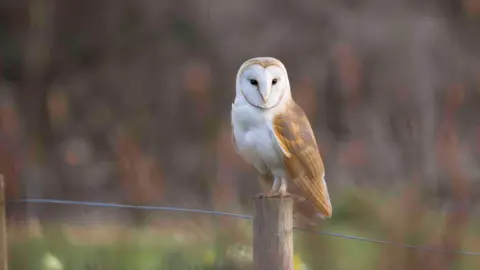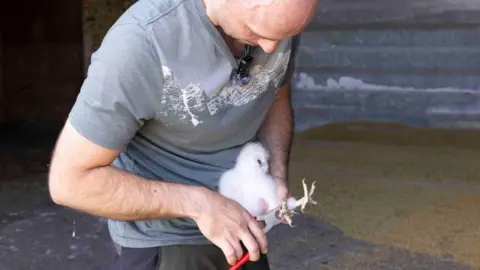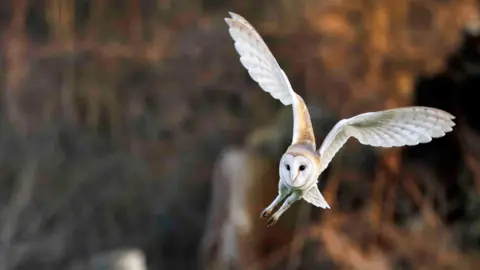Barn owls have 'worst breeding season in decades'
 Yvette Austin/BBC
Yvette Austin/BBCBarn owl conservationists in Sussex say they are worried about a drop in population numbers as they aim to find out what has caused the "worst breeding season in decades".
Volunteers say they have seen fewer than 10 chicks in nest boxes across the county so far this year, a marked decline on previous breeding seasons which had generally seen a recovery in barn owl numbers.
Researchers from the University of Brighton are trying to discover why numbers are so low. They are monitoring what the barn owls eat to help study their habitat.
Terry Hallahan, founder of the Sussex Barn Owl Group, said: "It's the worst year I have ever experienced in the 34 years I have been monitoring barn owls."
 Yvette Austin/BBC
Yvette Austin/BBCEach breeding season, trained volunteers check the health of young owls before putting rings on their legs so the birds can be identified.
Over 90% of barn owls in Sussex are now nesting in the 300 bird boxes spread across the county, Mr Hallahan said.
Martin Flores, a licensed bird ringer working with the volunteers, said the team had been sent images of barn owls hunting where they can identify the bird "right down to the individual, which chick they were and what nest they were in".
He added: "That's really positive and helps us start to map the population of barn owls in Sussex."
 Yvette Austin/BBC
Yvette Austin/BBCVolunteers are now teaming up with the University of Brighton to study the barn owl's habitat through owl pellets – the regurgitated remains of their prey which the birds are unable to digest.
Dr Maureen Berg, an ecologist at the university, said that from the pellets researchers can begin to gauge how healthy the habitats are for the barn owls, helping them to spot issues which could be leading to the decline in numbers.
Follow BBC Sussex on Facebook, on X, and on Instagram. Send your story ideas to [email protected] or WhatsApp us on 08081 002250.
